What Is FPV (First-Person View) in Drones?
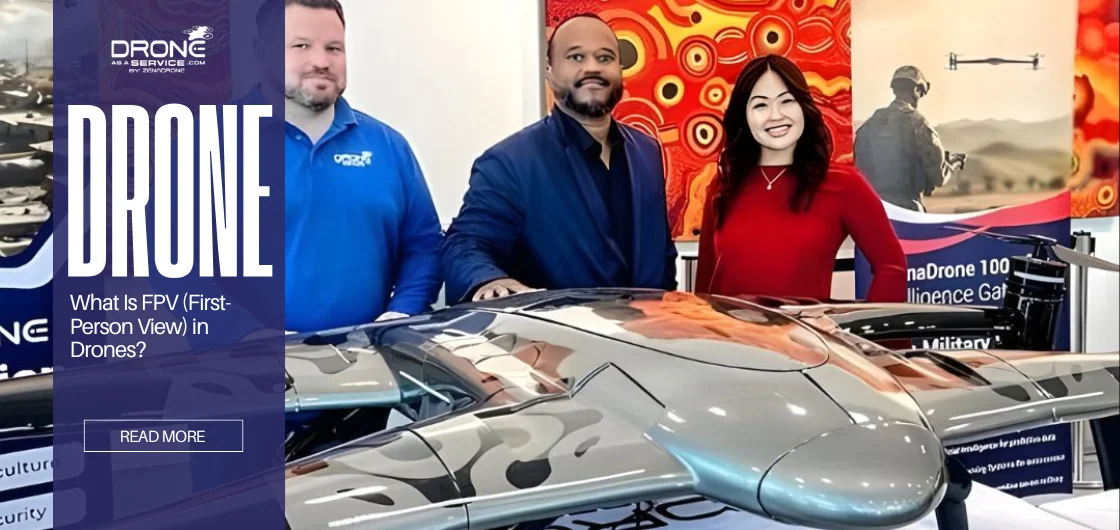
FPV (First-Person View) drone flying allows pilots to experience flight directly from the drone’s perspective through goggles, screens, or VR headsets. Unlike traditional line-of-sight flying, FPV offers a fully immersive experience, making it popular among drone racers, filmmakers, and enthusiasts.
This guide explores how FPV works, the types of FPV drones, their key components, benefits, and essential tips for flying safely and legally.
Main Components of an FPV Drone
You already know what an FPV drone is. But it’s just as important to learn about its different components. After all, having the proper know-how helps with troubleshooting, maintenance, repair, and upgrades.
FPV Camera
Drones capture live video feed using an onboard camera. Choose one with low latency, high resolution, a wide-angle view, and good low-light performance to ensure clear, instant footage.
Video Transmitter (VTX)
The captured video is wirelessly sent to your FPV goggles or monitor through video transmitter. Ensure a stable feed by going for a long-range video transmitter with adjustable transmission power and frequency channels.
Receiver and Antennas
These components are responsible for receiving and translating the signals sent by the video transmitter into the live footage that you’d expect. Without the receiver and antenna, you’d be staring at a blank screen.
FPV Goggles or Monitor
Displays the live feed for the pilot and spectators. For a smooth and detailed experience, you’ll need goggles or monitors with clear screen resolution, wide field of view (FOV), and high refresh rate.
Flight Controller
The drone’s brain, it controls stability and flight using various drone data, such as GPS and the Inertial Measurement Unit. It interprets various commands, including ascending, descending, rolling, pitching, and yawing to move drones as the pilots intend to.
Choose a flight controller that supports firmware updates, has low-latency response, and offers tuning options for advanced control.
Battery and Power System
The battery provides energy for flight, powering every component of the drone. It determines flight performance, payload capacity, and safety and reliability, highlighting the importance of a high-quality power supply.
Understanding how these parts work together helps you make more informed choices—whether you’re buying your first FPV kit or upgrading for improved performance.
Types of FPV Drones
There are different kinds of FPV drones, and each one is made for a different flying style and purpose. Here are the main groups, so you can pick the one that works best for you:
Racing Drones
Built for speed, agility, and performance, racing drones can breeze through obstacle courses, tight spaces, and compete in FPV racing leagues. They’re lightweight and highly responsive, making them perfect for sharp cornering and acceleration.
Ideal For: Competitive pilots and thrill seekers who enjoy fast-paced flying.
Freestyle Drones
Prioritizing durability and responsiveness, free style drones are highly agile while also durable to withstand crashes during practice. From flips, rolls, and dives to custom combos and advanced acrobatics, they’re perfect in aerial tricks and stunts for awe-striking, creative maneuvers.
Ideal For: Pilots who love performing stunts, experimenting with flight dynamics, and capturing expressive flight footage.
Cinematic FPV Drones
The latest in cutting-edge drone camera technology, cinematic FPV drones take videography to the next level. They’re equipped with stabilization gimbals and high-definition cameras. With these, you can capture stunning, professional-quality aerial footage from unique perspectives, which enhance visual storytelling.
Ideal for: Filmmakers, content creators, and drone videographers looking to capture immersive, dynamic shots.
Beginner FPV Drones
Beginner FPV drones are more affordable compared to advanced FPV drones. But more importantly, they’re especially engineered with simple controls and crash resistance, making it a perfect option as you build confidence and experience.
Ideal for: First-time flyers and hobbyists learning the basics of FPV drone flying.
Choosing the right FPV drone isn’t just about specs—it’s about matching your flying goals and skill level to the drone that fits your adventure.
How FPV Flying Works?
FPV (First-Person View) flying allows a drone pilot to see exactly what the drone’s camera sees — in real time. Unlike traditional flying, where the pilot watches the drone from the ground, FPV creates a live video feed transmitted directly from the drone to the pilot’s goggles, monitor, or headset.
At the heart of FPV flying are two main systems:
- The onboard camera and video transmitter (VTX): The camera captures live footage, which is instantly sent via the VTX using radio frequencies.
- The receiver and display system: On the pilot’s end, FPV goggles or screens receive this feed through a video receiver (VRX), allowing the pilot to view the drone’s perspective in real time.
The signal is transmitted using analog or digital systems:
- Analog FPV offers minimal delay (low latency) — ideal for racing.
- Digital FPV (like DJI systems) provides higher resolution and clarity — perfect for cinematic or recreational flying.
Through this setup, FPV flying delivers a fully immersive experience, making it feel as if you’re sitting inside the drone. This real-time perspective helps pilots fly through tight spaces, perform precise maneuvers, and capture dynamic aerial photography.
FPV vs. Line-of-Sight (LOS) Flying
| Aspect | FPV Flying | LOS Flying |
|---|---|---|
| Viewpoint | Drone aerial perspective | Ground perspective |
| Control | Precise driving for racing, stunts, and creative projects | Simpler control for simpler tasks |
| Experience | Immersive and realistic — feels like being inside the drone | Less immersive but easier to visually track the drone’s position |
| Learning Difficulty | Hard — requires simulation training and coordination | Beginner-friendly |
| Situational Awareness | Limited to the drone’s field of vision | Wider view of surroundings and obstacles |
| Best For | Racing, cinematic filming, exploration, and precise maneuvering | Training, casual flying, general photography |
Thanks to real-time sharing of the drone’s footage, you can get a full view of the landscape and its features. This enables precise navigation, agility, and speed–crucial aspects for many recreational hobbies and competitions, like drone racing.
LOS flying, on the other hand, is still very important for new pilots, as it’s relatively safer and easier. This is especially important when learning the basics or following legal requirements.
Benefits of Flying FPV Drones
FPV drones present several benefits that separate them from ordinary ones.
- Immersive, first-hand flying experience: FPV gives you that feeling of actually sitting in the pilot’s seat and seeing the world from the skies This brings you to the closest you can get to actually flying.
- Improved control and precision: FPV allows you to share the drone’s viewpoint, enabling greater precision and situational awareness during flight.
- Ideal for racing, exploration, and aerial videography: If you’re into the rush of high speeds, adventures, or capturing aesthetic videos, then FPVs will surely excite you.
- A growing hobby and competitive sport: FPV flying has evolved into a global community and sport, with dedicated races, clubs, and online forums connecting pilots worldwide.
Challenges and Risks in FPV Flying
Understanding the challenges and risks that FPV drone flying presents is key to avoiding accidents or minimizing losses when it does happen.
| Challenge / Risk | Details | Safety Tips |
|---|---|---|
| Steep Learning Curve | FPV flying requires mastering throttle control, orientation, camera angles, and quick reactions while handling real-time video feedback. | Start with FPV simulators to build muscle memory and confidence before flying outdoors. |
| Signal Loss / Video Interference | Trees, buildings, or long distances can cause video lag or total signal loss mid-flight. | Fly in open areas, align antennas correctly, and consider higher-quality transmitters and receivers. |
| Drone Crashes and Repair Costs | FPV drones fly fast and close to obstacles. Beginners often damage propellers, frames, or cameras. | Use a durable beginner-friendly drone, keep spare parts, and learn basic repair skills. |
| Legal Restrictions | Many countries require visual line of sight (VLOS) or have restrictions on flying near crowds or airports. | Check local drone laws, register if required, use approved flight zones, and follow safety guidelines. |
FPV Drone Regulations and Safety Tips
A successful and exciting FPV flight starts with being responsible. Remember to adhere to legal and safety standards and regulations.
- Maintain Visual Line of Sight (VLOS): You or a spotter should never lose sight of the FPV drone at any moment during the flight.
- Drone Registration: You need to register your FPV drones with your country’s aviation authority. For example, the FAA in the U.S., the CAA in the U.K., and the EASA in Europe.
- Flight Restrictions: When flying, stay away from airports, national parks, important infrastructure, public spaces, private property, controlled airspace, and government buildings. If you really need to fly in these areas, make sure you get the right permits and waivers ahead of time.
- Altitude Limits: Most places have a maximum altitude of 120 meters (400 feet) to keep drones safely below manned aircraft.
- Insurance and Licensing: If you’re using FPV drones for paid work or content creation, you may need operator certification or liability insurance.
- Local Regulations: Drones are subject to different local regulations, so be sure always to double-check to avoid penalties.
To further improve the safety of your FPV operations, here are practical tips that you should follow.
- Fly in open, obstacle-free areas.
- Avoid crowds and restricted zones.
- Perform pre-flight checks.
- Carry extra batteries.
- Use failsafe features.
- Conduct post-flight checks.
As much as you’d like to just have fun and experience the thrill of FPV drones, safety and legal awareness should always come first.
How to Get Started with FPV Flying
It’s no surprise if you’re excited for your first ever FPV drone experience. However, don’t be in too much of a rush and risk your safety. Read this step-by-step guide first to help successfully launch your FPV journey.
Choose Your Setup
Decide between a ready-to-fly (RTF) kit or building your own drone.
Ready-to-fly (RTF) drones are pre-assembled and pre-tuned with all the essential components and equipment for easy setup and operation. They’re ready to fly right out of the box, so you can begin FPV flying in no time. RTFs are the safest bet for complete beginners.
In contrast, building your own drone is a bit more complex, which requires more time for research and assembly. But it does have benefits, as well. It supports personalization of your own drone, while you learn about each component along the way. This simplifies maintenance, repairs, and upgrades when the time comes.
Use FPV Simulators
Train in a virtual environment to learn controls without risking crashes.
FPV drone flying is more complicated than the traditional method. So, before taking it to the skies, spend some time with FPV flight simulators. This will familiarize you with the controls, technique, and build muscle memory, ensuring safer flights in the future.
Set Up Your Gear
Set up your transmitter, receiver, antennas, and FPV goggles before the flight, so that everything goes smoothly.
Calibrate the sticks on your transmitter and check the modes for precise control. Then, connect the receiver to the transmitter, following the instructions from the manufacturer. For a clear, stable video feed, set the channel frequency to match your drone’s VTX.
Follow Safety Basics:
Before every flight, do a quick safety check.
- Double check your propellers, battery, and overall hardware for damage.
- Make sure your VTX and receiver antennas are secure.
- Verify your failsafe settings, including the return-to-home features.
- Fly in open areas away from people, trees, and buildings.
- Avoid restricted flight zones, such as airports, critical infrastructures, and military sites.
- Always check local drone regulations and maintain line of sight.
A few minutes of preparation can save your drone—and your wallet—from unnecessary crashes.
Learn Continuously
FPV drone flying is a learning journey, and there is so much to learn. Fortunately, its community is passionate and supportive, so you’ll never run out of tutorials and learning materials on YouTube or Discord.
Join FPV groups and forums to communicate with more seasoned pilots or even connect with others at your skill level.
Starting your FPV journey can be thrilling, but it can also be challenging, especially if you’re a beginner. Learn through tutorials and train using simulators before flying outdoors. Practice makes perfect, and you can only get better each day.
Future of FPV Drone Technology
What was once a niche hobby, FPV drones have become a fast-growing technology with practical applications in many fields. Let’s explore the new horizons that may open for FPV drones in the future.
HD Digital Transmission and Lower Latency
In the past, getting real-time video meant losing some clarity. But advances in signal processing and transmission bandwidth will support the instant sharing of 1080p video feeds.
Integration with AI and Obstacle Detection
AI is only getting smarter and faster from here on out. With that, FPV drones are slated to incorporate and enhance AI-assisted flight stabilization, path planning, obstacle detection, and collision avoidance.
VR and AR Integration for Immersive Flying
Virtual Reality (VR) and Augmented Reality (AR) are gradually entering the field of FPV planning. They’ll fuse reality and digital information to create a life-like experience.
Growth of FPV Drone Racing and Cinematic Content Creation
FPV drone racing continues to expand as a global competitive sport, with leagues, sponsorships, and live-streamed tournaments drawing large audiences.
Not only that, cinematic FPV drones are also transforming content creation for various industries, capturing smooth, dynamic, and visually stunning footage. Drones elevate video storytelling to places ordinary cameras can’t reach.
Immersion, speed, and intelligence — the future of FPV drone technology all come down to these three factors.
Why FPV Is the Future of Drone Flying
First-person view (FPV) drones are the next big leap in drone innovation. It enriches freedom and control, giving pilots a whole new look of the world from the eyes of the drone.
However, as thrilling as FPV drone flying is, it comes with its share of responsibility. Always follow drone regulations, fly in open areas, and use spotters when required. Responsible flying ensures FPV remains a safe, respected, and sustainable hobby for everyone.
Read Our Other Blogs
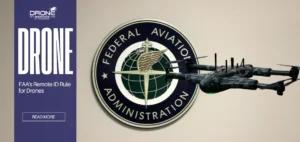
14 November 2025
FAA’s Remote ID Rule for Drones
FAA’s Remote ID Rule for Drones Drones have evolved from hobby gadgets to essential tools in agriculture, construction, security, and...
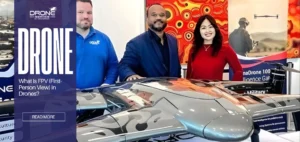
13 November 2025
What is FPV (First-Person View) in Drones?
What Is FPV (First-Person View) in Drones? FPV (First-Person View) drone flying allows pilots to experience flight directly from the...

12 November 2025
How to Calibrate a Drone Compass for Smooth Flights
How to Calibrate a Drone Compass for Smooth Flights Every successful drone flight begins with having stability and accuracy, which...
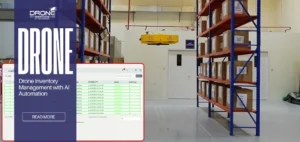
10 November 2025
Drone Inventory Management with AI Automation
Drone Inventory Management with AI Automation Manual inventory tracking is slow, costly, and prone to errors. Employees must climb ladders,...

07 November 2025
Drones for Emergency Response & Disaster Relief
The Best Autonomous Drone Companies in the World Disasters are a matter of time. Floods, fires, and earthquakes all require...
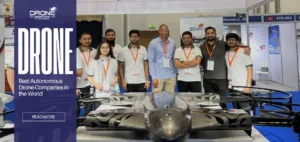
06 November 2025
The Best Autonomous Drone Companies in the World
The Best Autonomous Drone Companies in the World The United States is home to some of the best autonomous drone...


















